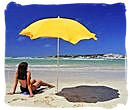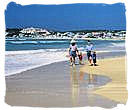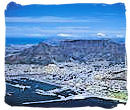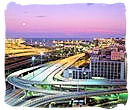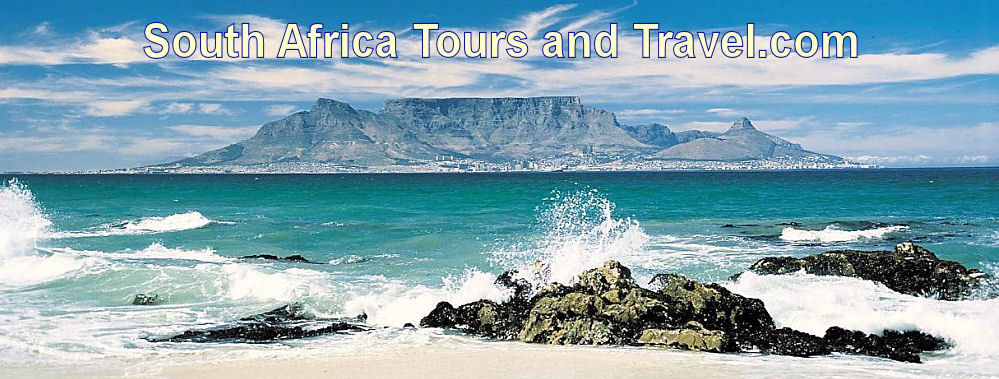 |
||
Breathtaking Knysna National Lake AreaWhen trying to describe the Knysna National Lake Area, its exceptional beauty and breathtaking scenery are the first things that come to mind.
The town itself together with its large warm-water estuary, its surrounding lush indigenous forests and golden beaches was declared "National Lake Area". Famous for its elephants, indigenous forest and rare seahorse, it forms part of the Garden Route National Park, one of the most beautiful stretches of coastline in the world along the south coast of South Africa. The National Lake Area is home to the Knysna Seahorse a very rare and unusual fish. It is the only place in the world where it is found together with the Swartvlei and Keurboom estuaries in the Southern Cape. Find out more about the beautiful Knysna National Lake Area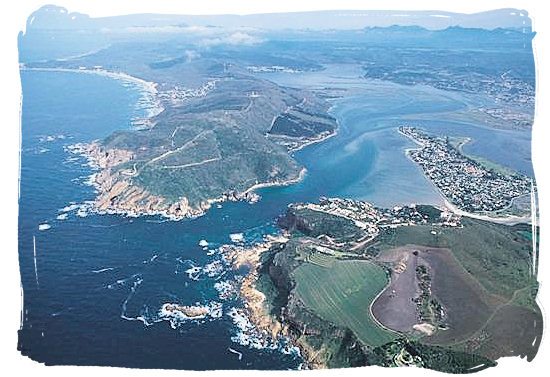 Aerial view of the Heads marking the entrance to the lagoon from the Indian ocean copyright © South African tourism General info,… Two massive sandstone cliff formations called “The Heads”, mark the place where the estuary, opens to the Indian Ocean. They are one of the most striking features along the entire South African coastline. 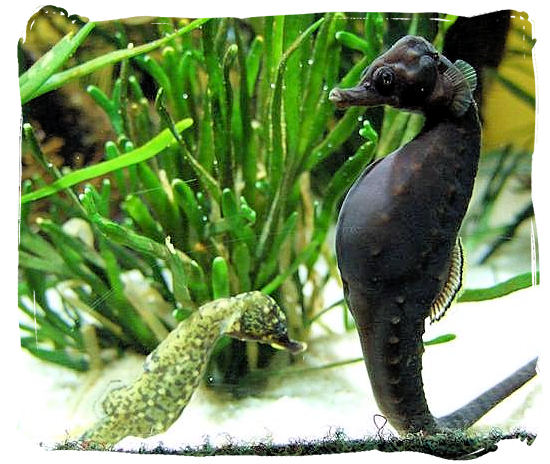 The very rare seahorse The estuary, commonly known as the Knysna lagoon, forms the heart of the National Lake area. It is fed by a river, which has its origins in the Outeniqua mountains. The estuary is 19 km long and gradually widens and deepens to form a lagoon approximately 3 km wide and about 5 m deep. 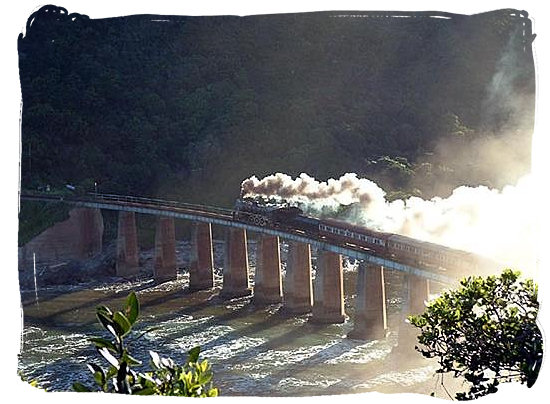 The Outeniqua Choo Tjoe steam train on the Kaaiman’s river bridge near Wilderness The name Knysna is a word of “Khoi” origin. There is much uncertainty however as to it’s exact meaning. It could mean “place of wood” or “fern leaves”, but also “straight down”. The latter being the most popular one and an obvious reference to The Heads. The town's history began in the year 1804, the year that saw the arrival of George Rex, rumoured to be the illegitimate son of King George lll. He purchased the estate known as Melkhoutkraal on the shores of the lagoon and moved his entire family and considerable entourage down to settle there. 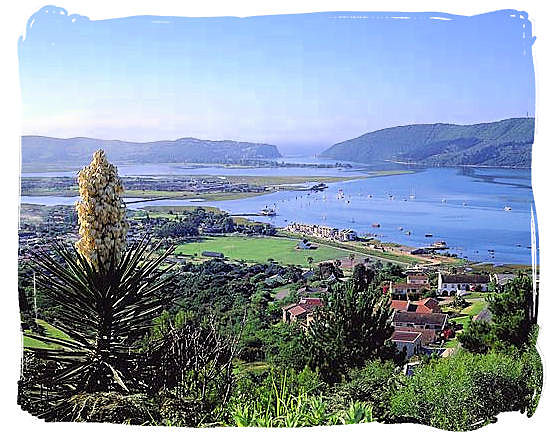 Panorama showing the lagoon with The Heads in the distance copyright © South African tourism Early settlers were dependant on the wood from the forests for building their dwellings and ox wagons. The timber industry was the driving force behind the early development of Knysna and is still playing a vital role in its economy today. Alluvial Gold was found in 1885 in Millwood, about 15 km's outside of the town. The town was officially founded in 1825. In 1851 it was declared a magistrate, and later on in 1881 it was declared a town. It became a port for naval ships as well as commercial ships bringing goods and supplies to this part of the country. The use of the harbour ceased by the time transportation of goods and supplies was done via railroad. 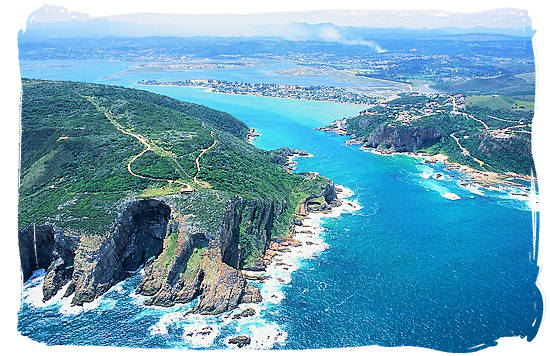 The famous Heads, guarding the entrance to the lagoon copyright © South African tourism Knysna lies on the famous Garden Route, nestling on the northern bank of the estuary between the Outeniqua Mountains in the north and Indian Ocean in the south and flanked by indigenous forests east and west. It is situated near the N2 highway, some 500 km. from Cape Town and approximately 300 km. from Port Elizabeth at the coast of the South Cape. One of the main attractions of the National lake Area are its lush indigenous age-old forests, which include Afro-montane or temperate rainforest, covering the hilly terrain. An abundance of unique Cape Fynbos (‘fine or delicate bush’) grows throughout the region. 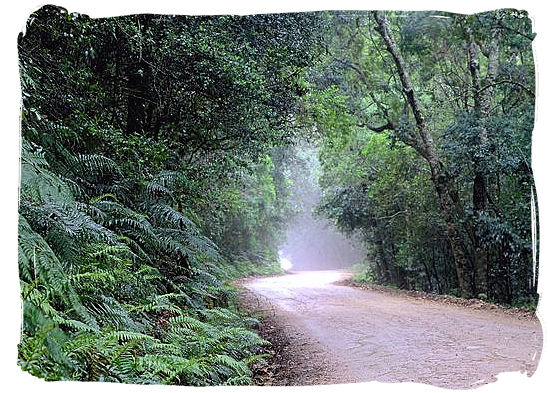 Inside the dense indigenous National Lake Area forest copyright © South African tourism The most important trees are Yellowwood, Stinkwood and Iron Wood, White Alder and Kamassie. The variety of trees that make up the indigenous forest differs from place to place. The forests are therefore divided in six types, which vary from “dry” to “moist” and “wet” types of forest. The National Lake Area is abundant in unique species of flora. These include the Lily (Vallota Speciosa), the Fern, (Rumohra adiantiformis), the Boxwood, (Gonioma Kamassi), the Watsonia (Watsonia Knysnana), and the Heath (Erica Densifolia). The latter one is a type of “Fynbos”, which is part of the world-renown Cape Floral Kingdom. 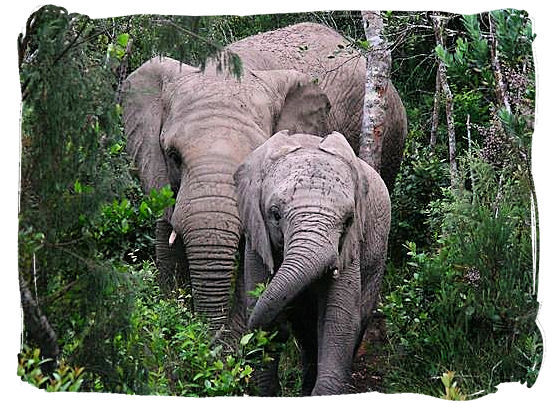 Elephants in the National Lake Area's forest The Indigenous forests in and around the National Lake Area used to be home to Africa’s most southerly elephant population. For generations they roamed freely in large numbers in their natural forest habitat. Today however, they have become very elusive, with only a handful reported to have survived. The National Lake Area boasts some of the rarest and most beautiful birds you’ll ever see, such as the famous Knysna Loeri and the African Black Oystercatcher, Knysna Warbler and Malachite Kingfishers. The rare crowned eagle is sometimes seen, its prey including vervet monkeys, small buck and dassies. 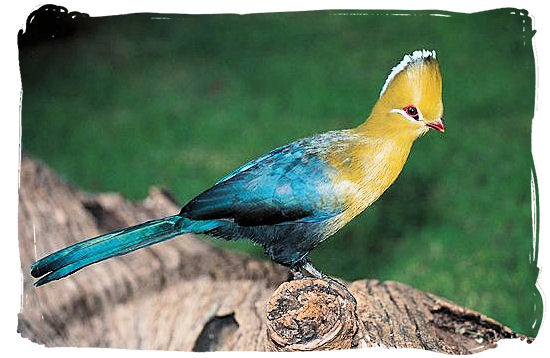 The beautiful Knysna Louri (Tauraco corythaix) copyright © South African tourism The tidal lagoon and open estuary of the river provides an excellent place to view waders in the summer months. The Grey Plover, Marsh Sandpiper, Greenshank, Curlew Sandpiper and Whimbrel are prominent. All year, but particularly in winter, the lagoon hosts some non-migratory larger species such as Egrets, Spoonbills, Gulls, Cormorants and Ibises. The threatened African Black Oystercatcher is present all year, but their numbers increase in winter to what is regarded as a globally significant population. Cape Shoveller , Kittlitz’s Plover, Pied Avocet and Black-winged Stilt are also present in good numbers. African Fish Eagle and Osprey should also be watched out for. Top of Page |
|
|
|
|
||
